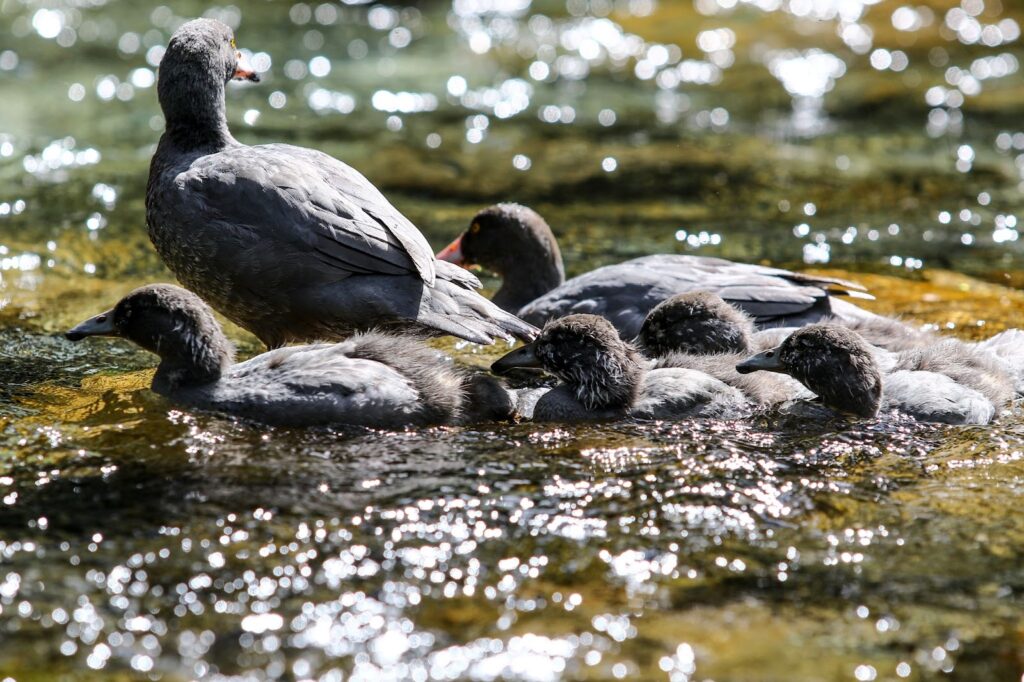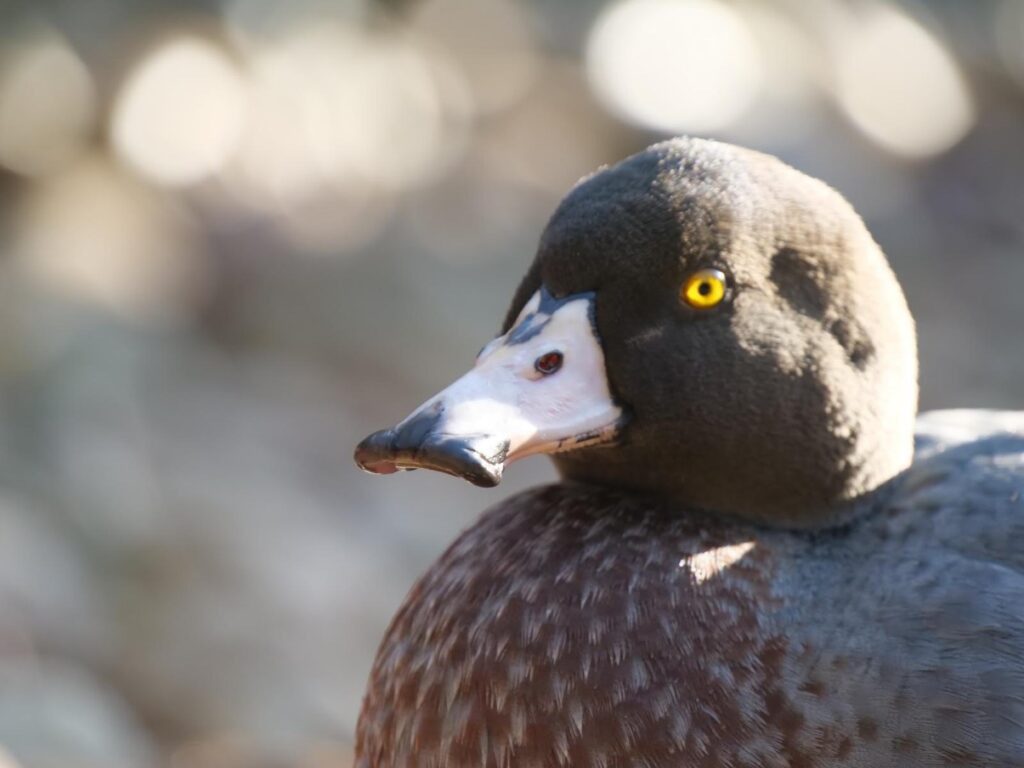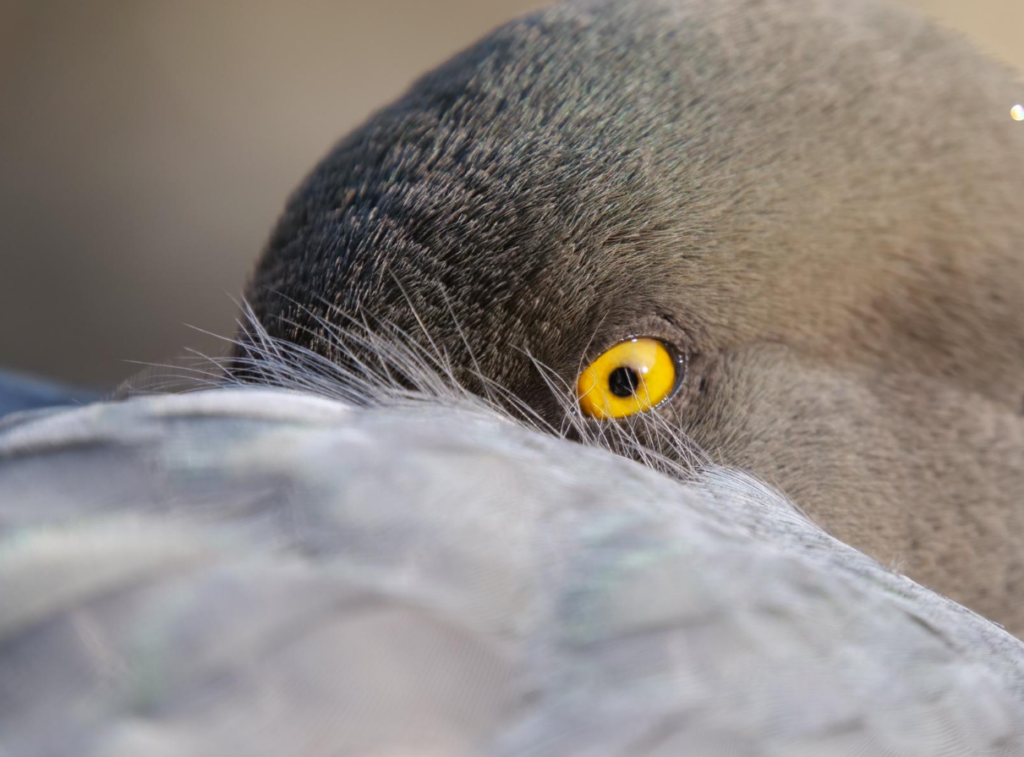Profile – Farmers for Whio, by Barry Burger
MCC is obviously not the only community group wanting to look after our beautiful catchment. There are many other groups, some that have been up and running for many years, that are contributing to amazing environmental outcomes through their efforts.
One of these groups is Farmers for Whio. Supported by the Tasman Environmental Trust, Farmers for Whio is a group of local landowners and volunteers in the Graham, Pearce, Baton and mid-Motueka River catchments. The group formed in 2020 to provide predator control to help protect the whio. Stoats are the whio’s main predator, but also feral & domestic cats, domestic dogs,and ferrets, as well as potentially our native weka and karearea.
As recorded in 1852 by a first pakeha settler to Motueka Valley, whio or blue duck’s ‘…favourite home and nesting place is the mountain torrent and there among the deep pools and rushing falls they’re always to be seen. So tame and fearless that they could be knocked over with a stick…’.

While their estimated population of under 3,000 is slowly increasing, whio are still a threatened and nationally vulnerable species, with an estimated population of less than 3000. Whio are an ancient and iconic species of waterfowl found only in New Zealand and featured on our $10 note – a taonga species with which Māori have a strong traditional, cultural, spiritual and historic connection. They live all year long in rivers which are clean and fast flowing, and they nest along the banks of rivers and feed on the aquatic insect life. The presence of whio is a good indication of the health of a river.
Another threat to whio is climate change and extreme weather events – not only during nesting times when nests and ducklings can get washed away by floods, but also in winter when a lot of the main food source for whio can get washed out of a river, primarily larvae from the stonefly and caddisfly. This can result in the females not having the body condition to produce eggs and nest successfully. Like many species, climate change is having a negative impact on whio.

Currently Farmers for Whio have approximately 600 traps spread throughout our local catchments. Trap boxes are built with the help of volunteers, as well as with students from Ngātīmoti School (who also have their own trapline), and outdoor education students at Motueka High School.
The traps used are primarily DOC 150 kill traps, and are checked by landowners, volunteers and local school children. Trap data is stored on trapnz, which is a national online platform for trapping groups to record their efforts.
To date, Farmers for Whio have caught 3570 pests, including 561 mustelids, 2453 rats, 403 hedgehogs, as well as feral cats, possums, mice and the occasional bunny.

Whio are most vulnerable to predation not only when they are nesting, but also during the moult in late summer, when they are replacing a large portion of their feathers and are deemed flightless.
Farmers for Whio have been supported by the World Wildlife Foundation and the Department of Conservation, and now have sponsorship from New Forests Ltd to help continue our conservation efforts. Hopefully this will result in more frequent sightings of whio in our catchments, and a growing appreciation for these remarkable birds among locals and visitors alike.

